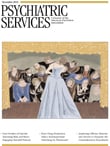News Briefs
CDC analysis indicates 59 million uninsured: A total of 59.1 million Americans went without health insurance for at least part of 2010, according to a Centers for Disease Control and Prevention (CDC) analysis of data from the National Health Interview Survey for 2006, 2007, 2008, 2009, and the first quarter of 2010. More than 80% of the uninsured Americans are adults aged 18 to 64 (Medicare covers persons aged 65 and older). One in five American adults under age 65 (22%) is currently uninsured. Four million more Americans went without insurance in the first quarter of 2010 than during the first quarter in 2008. When the new data were released, CDC Director Thomas Frieden, M.D., M.P.H., said that the data "allow us to debunk two myths about health care coverage. The first myth is that it's only the poor who are uninsured." He noted that half of the 59 million uninsured individuals are over the poverty level and that one in three uninsured adults is in the middle-income range ($44,000–$65,000 a year for a family of four). The other myth—that only the healthy risk going without insurance—also does not square with the data: more than 40% of those who were uninsured at some point during the past year had one or more chronic diseases. For example, 15 million had high blood pressure, diabetes, or asthma. The data also show an increase in the number of people who go for a year or more with no insurance: from 27.5 million in 2008 to 30.4 million in the first quarter of 2010. The data analysis is available on the CDC Web site at www.cdc.gov/vitalsigns/healthcareaccess/latestfindings.html .
Revised guidelines for treating childhood depression: The American Psychiatric Association (APA) and the American Academy of Child and Adolescent Psychiatry (AACAP) have released a revised and expanded version of The Use of Medication in Treating Childhood and Adolescent Depression: Information for Patients and Families. The guide, which was originally published in 2005, is intended to help families make informed decisions about care for a child or adolescent with depression. The new version uses a question-and-answer format to present current findings on the effectiveness of various treatments. The guide has been expanded to address a range of medications and other treatments and suicide risk. It was developed jointly by APA and AACAP in consultation with a national coalition of parents, clinicians, and professional associations and has been endorsed by the National Alliance on Mental Illness, the Suicide Prevention Action Network, Mental Health America, and the Depression and Bipolar Support Alliance. The 15-page guide is available for download from a joint APA-AACAP Web site at parentsmedguide.org .
Fourth edition of Kaiser Foundation's Medicare Chartbook: The 2010 edition of the Medicare Chartbook has been released by the Kaiser Family Foundation. The 108-page book provides the most recent and reliable data available about the Medicare program, which currently covers 47 million people, including 39 million aged 65 and older and eight million nonelderly people with a permanent disability. The latest data indicate that about one in five Medicare beneficiaries is dually eligible for Medicaid, which includes a large portion of people with psychiatric disabilities. "Dual eligibles" have a different demographic profile than other Medicare beneficiaries: a larger percentage have a cognitive or mental impairment (61% versus 27%) and are in fair or poor health (51% versus 23%). Dual eligibles represent a varying share of state Medicare populations, ranging from a low of 8% in North Dakota to a high of 31% in Maine. The Medicare Chartbook is available on the Kaiser Web site at www.kff.org/medicare/8103.cfm .
New resources on mental health care reform: The National Council for Community Behavioral Healthcare has posted two new resources on its health care reform blog ( mentalhealthcarereform.org ) to help state officials, providers, and consumers prepare for changes under reform. The new "Roadmap for State Associations" describes strategies that advocates can use in their efforts to influence implementation of reform at the state level. Focusing on five areas of reform—health insurance exchanges, medical health homes, Medicaid expansion, home- and community-based waivers, and accountable care organizations—the roadmap provides a brief summary, a list of action items, and helpful resources in each area. It is designed to help advocates and state associations position themselves as key resources for state agencies, state legislators, and other advocacy groups. A second resource, the updated "Health Reform Summary Chart," describes major provisions that will affect behavioral health organizations and consumers. This chart has been updated to include information about the effective date of each provision and the levels of appropriated or authorized funding for each program. Another organization the National Conference of State Legislatures (NCSL), has compiled a useful overview of state legislative and executive branch implementation efforts related to reform ( www.ncsl.org/?tabid=20231 ). According to data in the report, since September 27, 2010, at least 25 states have enacted or adopted legislation to form a committee or task force regarding health care reform and at least 14 governors have issued executive orders to begin the process. The report links to examples of state legislation, state press releases and reports, and summaries of executive orders, as well as to a new NCSL resource—a summary of recent state legislation and actions that challenge provisions of health reform ( www.ncsl.org/?tabid=18906 ).



